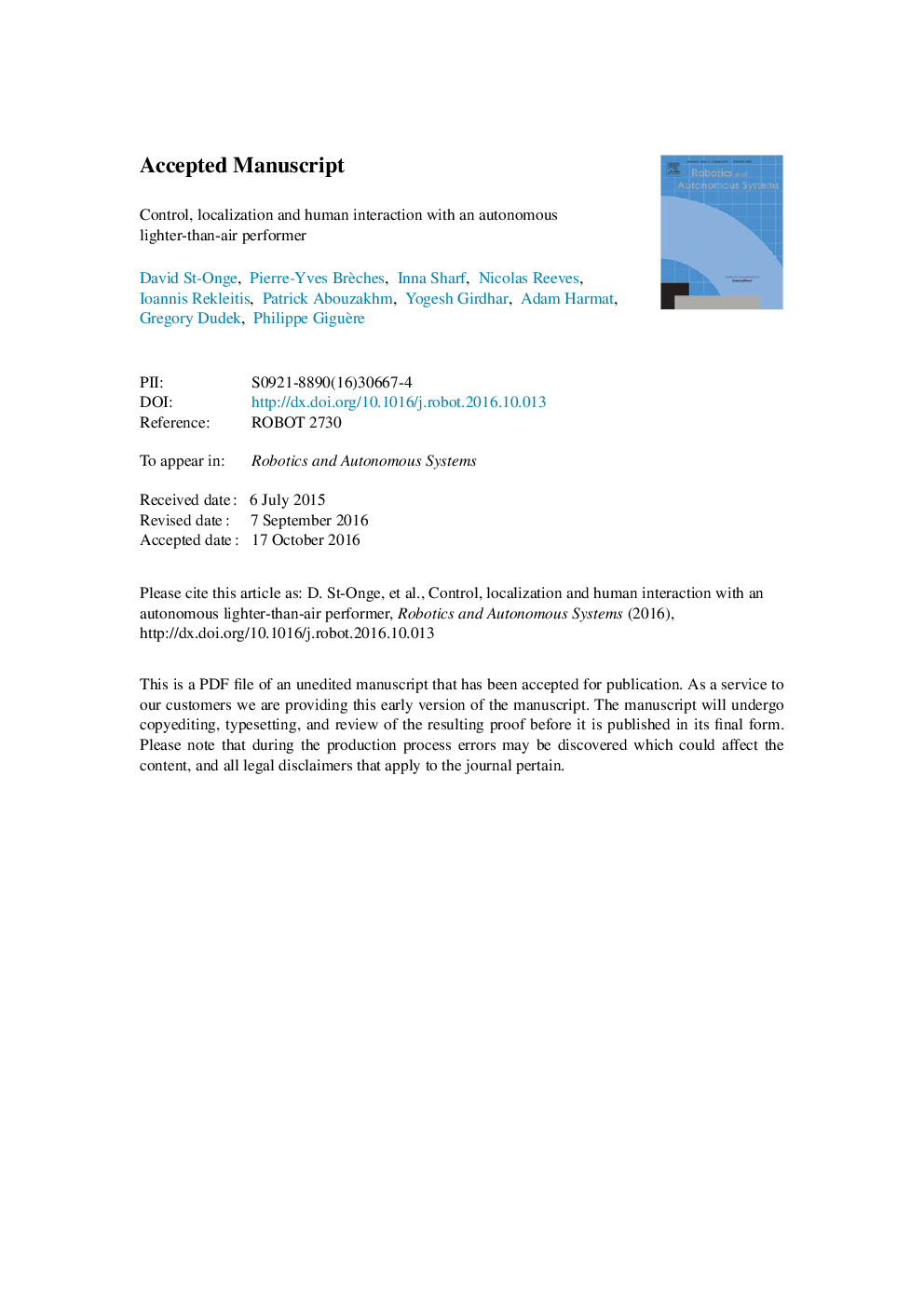| Article ID | Journal | Published Year | Pages | File Type |
|---|---|---|---|---|
| 4948900 | Robotics and Autonomous Systems | 2017 | 43 Pages |
Abstract
Due to the recent technological progress, Human-RobotInteraction (HRI) has become a major field of research in both engineering and artistic realms, particularly so in the last decade. The mainstream interests are, however, extremely diverse: challenges are continuously shifting, the evolution of robot' skills, as well as the advances in methods for understanding their environment radically impact the design and implementation of research prototypes. When directly deployed in a public installation or artistic performances, robots help foster the next level of understanding in HRI. To this effect, this paper presents a successful interdisciplinary art-science-technology project, the Aerostabiles, leading to a new way of conducting HRI research. The project consists of developing a mechatronic, intelligent platform embodied in multiple geometric blimps - cubes - that hover and move in the air. The artistic context of this project required a number of advances in engineering on the aspects of localization and control systems, flight dynamics, as well as interaction strategies, and their evolution through periods of collective activities called “research-creation residencies”. These events involve artists, engineers, and performers working in close collaboration, sometimes, over several weeks at a time. They generate fruitful exchanges between all researchers, but most of all, they present a unique and creative way to direct and focus the robotics development. This paper represents an overview of the technical contributions from a range of expertise through the artistic drive of the Aerostabiles project.
Related Topics
Physical Sciences and Engineering
Computer Science
Artificial Intelligence
Authors
David St-Onge, Pierre-Yves Brèches, Inna Sharf, Nicolas Reeves, Ioannis Rekleitis, Patrick Abouzakhm, Yogesh Girdhar, Adam Harmat, Gregory Dudek, Philippe Giguère,
